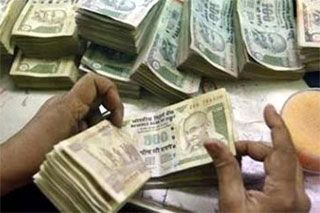Economist Arvind Panagariya has also argued for loosening deficit targets to boost capital spending
 A weak recovery from India's longest growth slowdown in decades is pushing Prime Minister Narendra Modi's advisers to consider loosening fiscal deficit targets, risking the ire of investors, ratings agencies and the central bank.
A weak recovery from India's longest growth slowdown in decades is pushing Prime Minister Narendra Modi's advisers to consider loosening fiscal deficit targets, risking the ire of investors, ratings agencies and the central bank.
Ahead of the budget in February, Modi's new team of advisers has argued for higher deficits to fund infrastructure projects needed to remove bottlenecks constraining growth and to create jobs for a burgeoning workforce.
Yet with debt service devouring 42 percent of government spending, higher deficits would revive risks of a ratings downgrade and delay an interest rate cut by the Reserve Bank of India (RBI).
"Fiscal consolidation is important. But should it be at the cost of growth?" one senior finance ministry official told Reuters. "We cannot afford to compromise with growth forever."
In a mid-year report to parliament last month, the finance ministry's new economic adviser Arvind Subramanian urged a comprehensive review of India's medium-term fiscal strategy to create space for higher capital spending.
Economist Arvind Panagariya, named this week by Modi to run his new policy unit, has also argued for loosening deficit targets to boost capital spending.
Weak investment has been a prime cause of India's worst economic performance in a quarter century, with two successive years of sub-5 percent growth before a weak recovery began during 2014/15.
Portfolio investors pumped $40 billion into India last year, betting on Modi's promise of "better days" ahead, putting Indian shares and bonds among the best performers globally.
To make good on that pledge, Modi plans to spend up to $50 billion in the year to March 2016 on new roads, rail lines, ports and irrigation facilities.
"The most urgent priority (is) to build the productive capacity of the economy and launch a supply-side revolution," said Jayant Sinha, a deputy finance minister, adding that India needs growth rates of 7-8 percent to prosper.
RISKS
This strategy could mean ditching targets to trim the fiscal deficit to an eight-year low of 3.6 percent of GDP in 2015/16 and 3 percent the following year.
The economy's slowdown has depressed tax revenues to just 10 percent of GDP from a peak of 11.9 percent in 2007-08, forcing New Delhi to cut spending and roll over outlays to contain the deficit in the past two years.
This fiscal year, Finance Minister Arun Jaitley will resort to similar methods to cap the deficit at 4.1 percent, aides say.
With a national debt at 70 percent of GDP and a consolidated fiscal deficit above 7 percent, India's public finances are worse than its peers and it has spent recent years at risk of a downgrade of its sovereign credit rating to 'junk' status.
Success in narrowing the deficit by 1.2 percentage points to 4.5 percent last year helped ward off downgrades.
Keeping India at the lowest investment grade rating, major rating agencies have urged New Delhi to invest more without increasing borrowing.
"High fiscal deficits constrain India's sovereign credit profile," Atsi Sheth, senior vice president at Moody's, told Reuters.
"If higher public investment was pursued by redirecting expenditures away from current and towards capital spending, thus supporting growth without increasing fiscal risks, it would be credit positive."
Finance ministry officials say it is premature to say whether fiscal targets will have to be jettisoned, as they are banking on windfalls from tumbling global oil prices and mobile spectrum and coal block auctions.
With inflation declining steeply to 4.4 percent in November, the RBI is holding out prospects of a cut in its 8 percent benchmark interest rate, but Governor Raghuram Rajan is waiting for Jaitley's budget before acting.
A higher deficit may compel the RBI to keep rates on hold, which Manish Wadhawan, managing director and head of rates at HSBC, said would spark a sell-off in bond markets that have rallied hard since Modi took power last May.
Photograph: PTI










